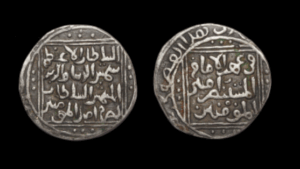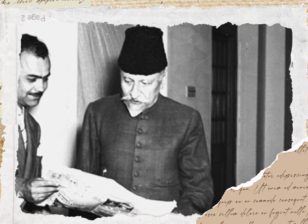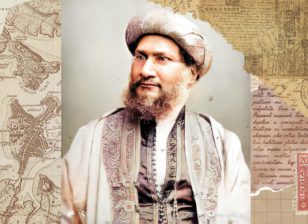Who Was Razia Sultan? 5 Facts About The Queen Who Ruled Like No Man Could
By Dania Ghauri
In a world filled with patriarchal governments, Razia Sultan made history as the rst—and only—female ruler of the Delhi Sultanate. She claimed her rightful title and broke through cultural and religious expectations to lead with strength, intelligence, and condence. Although her reign didn’t last long, the impact she made still stands centuries later.
Here are some ways Razia Sultan broke barriers and earned her place in history:

Photo Source: History of Islam, An encyclopedia of Islamic history
1. First and Only Female Sultan of the Delhi Sultanate
Before leaving for his Gwalior campaign in 1231, Sultan Iltutmish left his daughter, Razia, in charge of Delhi’s administration. During this time, Razia performed her duties so well that after returning to Delhi, Iltutmish decided to name her as his successor, stating that Razia was more capable than his sons. After her father’s passing in April 1236, Razia Sultan reigned from November 1236 to April 1240 and was revolutionary in breaking the pattern of strictly male rulers.

Silver Tanka Issued: c. 1236, Photo Source: Sarmaya Arts Foundation, Mumbai
2. Claiming Equality
To be seen as an equal to men, Razia Sultan refused the title “Sultana,” as at the time, it was associated with the wives of Sultans, rather than the female ruler herself. After starting her reign with her first coins being issued with her father’s name, in 1237–1238, she began to issue coins with her name alone. Razia also dressed in the traditional attire of a sultan, which was previously only worn by men. She would constantly show up in public with weapons, riding through streets on an elephant, and interacting with men as her equal.

Miniature painting of Razia Sultan: c. 19th century by Gulam Ali Khan
3. Opposing Religious & Racial Prejudice
As a ruler in a diverse empire, Razia took calculated steps to include all groups in daily life, regardless of how common discrimination against different groups was. One of her most progressive choices was her attempt to abolish the Jizya, which was a tax on non-Muslims under Islamic rule, as she believed people only converted to Islam out of fear. Razia also broke racial boundaries by appointing Jamal-ud-din Yaqut, an Ethiopian slave, to a high-ranking position alongside her. This decision caused backlash from nobles all around, but showed that Razia judged people based on their ability and not their background.

Photo Source: Wikimedia Commons
4. Leading Military Campaigns
Razia actively led military campaigns and made strategic decisions to maintain stability. In 1238-1239, when many governors rebelled against her, she personally led her army out of Delhi, where she set up camp and suppressed the revolts. She also used diplomatic tactics, allowing her to win over those who were neutral. She strove to avoid unnecessary conflicts, such as with the Mongols, which was done by maintaining peaceful diplomatic relations, thereby protecting the empire from threats. Together, her strengths and political skills helped her defend her throne.

Lacquer binding cover of a manuscript of Tulsi Das’ Ramcharitmanas: c.1830–36, Photo Source: Wikimedia Commons
5. Revival of Education, Arts & Public Libraries
During her reign, she revived and expanded educational institutions, including schools, academies, and research centers. She reworked the curriculum to include advanced subjects such as philosophy, astronomy, science, and literature, making sure that students from all backgrounds had access to education. However, her wish to educate others didn’t stop there. She supported public libraries to fill them with numerous kinds of texts, from the Quran to pieces by ancient philosophers. This mix of new knowledge encouraged curiosity and made learning increasingly accessible.
Final Thought
Razia Sultan’s story isn’t just about being the first woman to rule the Delhi Sultanate, but about how she led with confidence, intelligence, and a new vision in a time when most people didn’t believe in her capability. From breaking stereotypical gender roles and commanding armies to promoting education and inclusivity, she redefined what leadership could look like. Even though her time as ruler was short, the impact she made still stands today by proving that leadership isn’t about gender, it’s about strength and purpose.




